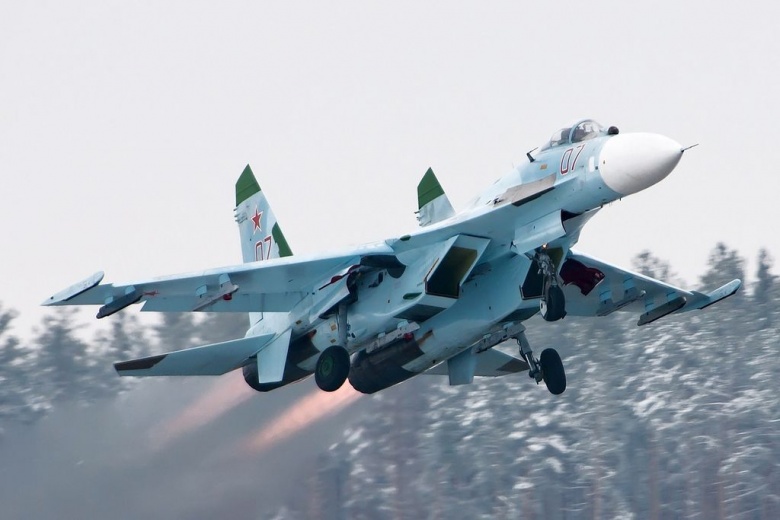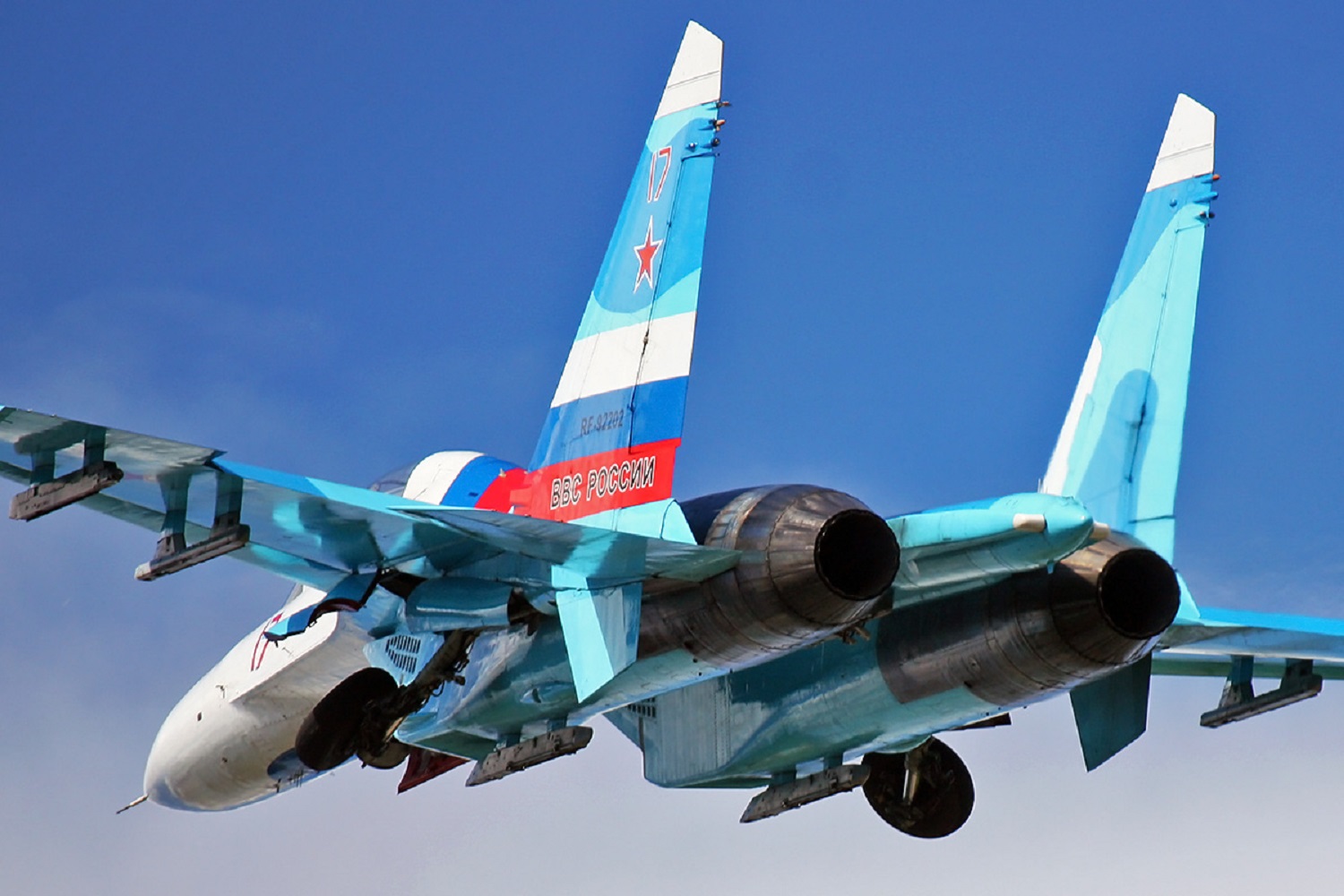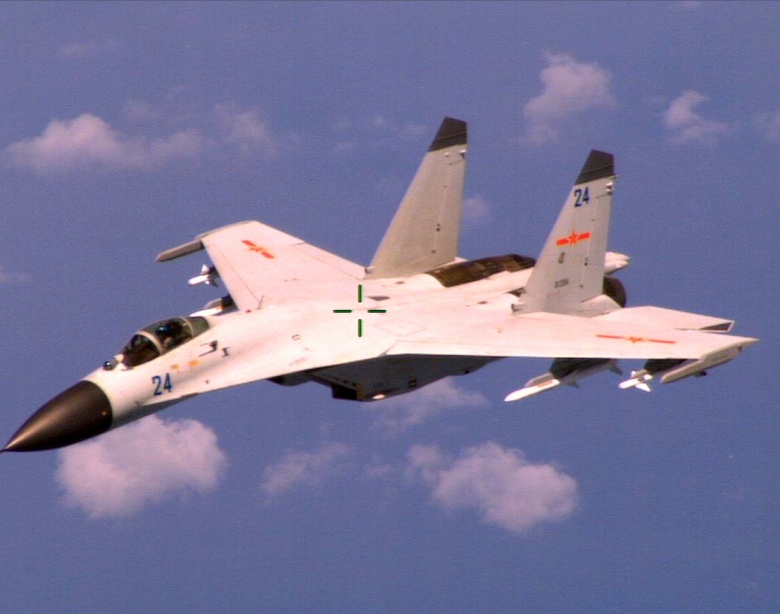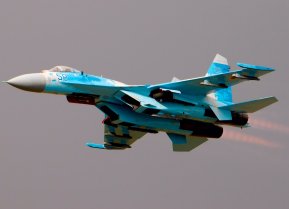Su-27 Flanker: The Story of Russia's F-15 Killer
Following the dissolution of the Soviet Union in late 1991, the Su-27 Flanker remained the backbone of the Russian Air Force throughout the 1990s and early 2000s.
In late October 2023, the National Museum of the United States Air Force shared a video on X – the social media platform formerly known as Twitter – highlighting the arrival of its latest acquisition: a Sukhoi Su-27 (NATO reporting name Flanker).
It was quite the notable edition to the collection, as it is reportedly only the second Su-27 to be sent to a museum, with the other being a Su-27PD that is part of a static display at the Central Armed Forces Museum in Moscow.
The aircraft, which was reportedly acquired from Ukraine, will soon join the collection of the world-famous military aviation museum, located at Wright-Patterson Air Force Base (AFB), Dayton, Ohio.
The institution received the two-seat Su-27UB Flanker-C via the U.S. military's Foreign Material Exploitation (FME), where it was likely tested, taken apart, and reassembled.
The National Museum of the United States Air Forces first announced the acquisition of the Soviet-designed air superiority fighter in September.
Su-27: The F-15 Eagle Killer
The Su-27 was developed in the Soviet Union in the early 1970s, and it was meant to be the Kremlin's answer to the McDonnell-Douglas F-15 Eagle as well as the Grumman F-14 Tomcat.
The Su-27 first entered service in the mid-1980s as an air superiority fighter, and its primary role was to be a long-range interceptor against the United States Air Force's Strategic Air Command's Rockwell B-1B Lancer and Boeing B-52G and H Stratofortress bombers, while also protecting the Soviet Union's coastlines from aircraft carriers. It was also tasked with flying long-range fighter escorts for Soviet heavy bombers including the Tupolev Tu-95, Tupolev Tu-22M, and Tupolev Tu-160.
Origins of the Flanker
In 1969, the Soviet Union learned of the United States Air Force's "F-X" program, which would eventually result in the F-15 Eagle. Moscow feared that a new American fighter could provide the West with a significant technological advantage over the existing Soviet fighters – and sought to develop its own advanced combat aircraft.
The goal of the Kremlin's program was to create a highly agile fighter with long-range capabilities, heavy armament, and sophisticated sensors. It was highly ambitious for the Soviet Union, and the program was eventually split in two – with a lightweight aircraft (Lyogkyi Perspektivnyy Frontovoy Istrebitel) and the heavier (Tyazholyi Perspektivnyy Frontovoy Istrebitel). The LPFI program eventually resulted in the Mikoyan MiG-29, a short-range tactical fighter, while the TPFI program was assigned to Sukhoi.

The Sukhoi Design Bureau first began work on its T-10 design in 1969.
To maximize the aircraft's maneuverability, it was designed from the start to utilize a fly-by-wire (FBW) control system. However, as was common within the Soviet Union, the development of the aircraft proved to be slow going, and the initial prototype didn't make its maiden flight until May 1977. In its initial form, the T-10 prototype aircraft also displayed several serious deficiencies – so much so that a complete redesign was required.
It finally reemerged as the radically reworked T-10S-1 in 1981.
The aircraft entered series production in 1982 as a single-seat multirole fighter and received the designation Su-27. Two years later, the two-seater version, the Su-27UB (NATO reporting name "Flanker-C"), was introduced. By the end of the Cold War, just over 400 Su-27s in both versions were produced for service with the Soviet Air Force.
The original Su-27 Flanker-B/C production models could carry weapons on ten external hardpoints, including one on each of the wingtips, two under each wing, one under each engine, and two in tandem on the fuselage centerline. The aircraft’s self-protection suite includes a radar warning receiver (RWR), a two-pod electronic countermeasure (ECM) suite, and chaff/flare dispensers.
At the Paris Air Show
Though today it is possible to see the Flanker up close at the National Museum of the United States Air Force, it was largely a rare sight in the West during the latter stages of the Cold War.
However, the Soviet aircraft made its official debut in the West at the 1989 Paris Air Show, just four years after it entered service.
As Smithsonian magazine reported, "Test pilot Viktor Pugachev stunned the crowd with his signature 'cobra' maneuver, pitching his sky-blue Sukhoi up to beyond vertical and skidding it forward on its tail, proving the fighter's super-maneuverability."
The Backbone of the Russian Air Force
Following the dissolution of the Soviet Union in late 1991, the "Flanker" remained the backbone of the Russian Air Force throughout the 1990s and early 2000s.
Many of those aircraft underwent a mid-life upgrade, which transformed them into the re-designated Su-27SM. The fighters were equipped with a new avionics fleet, and they were complemented by a small batch of newly built aircraft that also featured improved avionics and mission equipment. Those aircraft were designated the Su-27SM3.

The Su-27 also demonstrated considerable growth potential, which included a variant for use as a carrier-based fighter, while the platform has become a proven export aircraft.
Foreign Military Sales
In the 1990s, Moscow also began to produce the Flanker for foreign sales. Among the export models was the baseline Su-27SK, developed for China. It was similar to the Flanker-B but with additional air-to-ground capabilities. In addition, China had also received the Su-27UBK, which was based on the Flanker-C.
After around eighty of the Russian-built aircraft were supplied to the People’s Liberation Army (PLA), Beijing began the production of a licensed version. China built an additional ninety-five single-seat models, designated as the Shenyang J-11. That reverse-engineered version of the Su-27 greatly angered Moscow.
In October 2023, a J-11 flew within 10 feet of a U.S. B-52 STratofortess bomber over the South China Sea – an action that U.S. Indo-Pacific Command deemed "unsafe and unprofessional."

Use by Both Sides in the Russian-Ukraine War
The Su-27 has seen considerable service in the ongoing conflict in Ukraine.
The first Soviet unit to receive the Flanker was the 831st Fighter Regiment (now Brigade), which was based at Myrhorod, in the former Soviet republic of Ukraine. The unit was considered to be among the best in the Soviet Union.
Around two dozen were still reported to be in Ukrainian service when Russia launched its unprovoked invasion in February 2022.
Author Experience and Expertise
Peter Suciu is a Michigan-based writer. He has contributed to more than four dozen magazines, newspapers, and websites with over 3,200 published pieces over a twenty-year career in journalism. He regularly writes about military hardware, firearms history, cybersecurity, politics, and international affairs. Peter is also a Contributing Writer for Forbes and Clearance Jobs. You can follow him on Twitter: @PeterSuciu.
All images are Creative Commons.


